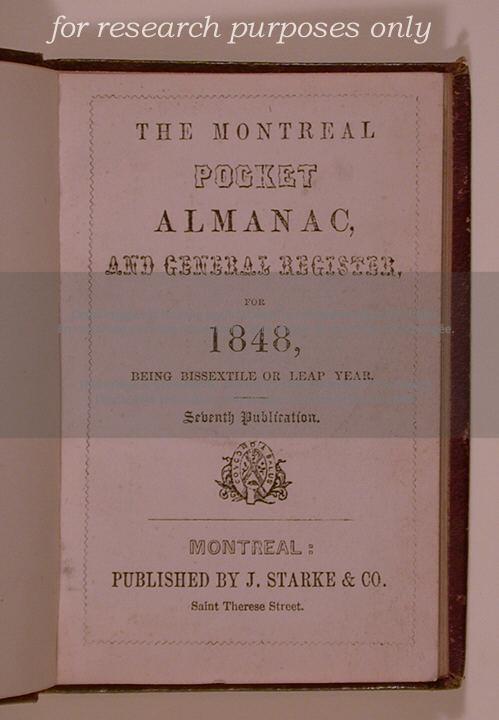
Collection
In traditional societies, printed material intended for the masses was essentially of two types: religious, in the form of catechisms, and the almanac. The latter was essentially a calendar that set out the year's days and holidays. Etymologically, the word "almanac" is thought to be of Arabic origin, being composed of the article "al" and the word "mana," which means "to count." The ending "manac" (calendar) is derived from the term "manaquebu," which means to predict the future. The first almanacs were prophetic in nature. In the mid-16th century, Rabelais published a series of almanacs containing some rather comical predictions.
The traditional people's almanac generally consists of several parts. The calendar part and the practical part make up the two basic components of the almanac. They are rounded out by a historical part that recounts the main events of the year just passed and by an administrative part that serves as a civil and religious register. Canadian editor Samuel Neilson provided the following succinct account of what an almanac generally consisted of in the 18th century:
"The matter which should form the contents of an Almanac has constantly varied in all countries, and seems in a great measure arbitrary, however they all agree that it ought chiefly to consist in a Calendar for the measure of time, which being dependant on the motion of the heavenly bodies maskes an Almanac so much of the Science of Astronomy as is necessary for the regulation of human affairs.
But this like most other institutions, from time to time has been thought susceptible of improvement, and that additional advantage might arise to the public by rendering its utility more extensive, which has since become the common object of both the makers and purchasers.
Astronomy, as far as it regards the measure of time, forming the ground work of an Almanac objects relative to that science, in a more extended point of view, and pursued thro' other motives, have very properly made a second and not the least interesting part of an Almanac.
Another portion has been very fitly appropriated to objects of general Utility, such as short sketches of Political, moral or scientifical truths. Subjects of mere amusement have also been introduced at times.
In most countries Almanacs have served as a sort of civil register of the names of the public functionaries of every denomination, appertaining to the communities they are intended to circulate in.
And lastly, objects of local concern, chiefly relative to the affairs of the country in which it may be published."
Scope and Content
This collection of almanacs published in Montreal and Toronto is relevant to a number of aspects of Canadian history in the 19th century. The almanacs contain all kinds of information on Canada, Quebec (or Lower Canada, depending on the period) or Montreal, for a given year. Canadian almanacs from the 19th century are an extremely rich source of information on Canadian institutions of their time. Over the years, they became true civil and administrative record books. They sought to inform Canadians about their public institutions (postal service, justice, etc.) while also providing information on religious, charity, literary, national and financial organizations.
The almanacs contain information such as the year's anniversaries and official holidays, astronomical information (eclipses, movement of the planets), a list of banking institutions, a list of politicians and civil servants (federal, provincial and municipal), customs duties, a description of courts of justice, long-range weather forecasts, a list of medical practitioners, lawyers, surveyors and other professionals, a list of clergymen (Protestant and Catholic), summaries and key events of Canadian history, a description of Canadian postal services, monetary equivalencies, the value of gold and silver, information about the United Kingdom, its politicians and the royal family, information about Canada's population, summaries of public finances, a description of imports and exports, a list of patents registered in Canada, literary and scientific information, information about Freemasonry, information and lists relating to the army and the militia, information about education, and immigration and social statistics.
Some of the almanacs also include maps of Canada or of certain regions of the country. Most of them also contain advertising, often with illustrations, for a variety of products, services and institutions.
The collection is divided into the following series:
C622/A
Starke's Pocket Almanac, Advertiser and General Register;
C622/B The Quebec Almanack;
C622/C The Star Almanach;
C622/D The Canadian Almanach;
C622/E The Year Book and Almanach of Canada;
C622/F Other almanachs, Montreal;
C622/G The People's Almanach;
C622/H Other almanachs.
Information about the objects in our collection is updated to reflect new research findings. If you have any information to share regarding this object, please email reference.mccord@mccord-stewart.ca.Information about rights and reproductions is available here.
This project is made possible thanks to the generous support of the Azrieli Foundation and Canadian Heritage.



